at the Institute of Systematics and Ecology of Animals
of Siberian Division of the Russian Academy of Sciences
(Novosibirsk, Russia)
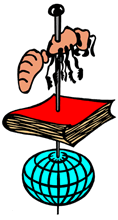
The History

The History
During the World Wars, for an extremely short period of time a substantial recombination of the civilization centers occurs. In the front areas, the elements of civilizations are exterminated while in a deep rear, on the contrary, they appear and develop rapidly. Siberia represents a vivid illustration of this notion. During the Second World War, it was here where a huge amount of industrial enterprises, scientific and cultural institutions were transferred from the European part of the USSR. After the war most of them were returned to the places of their former situation. However, in Siberia they left their subsidiaries and branches or analogs. As a result, for the five years of the war the civilization potential of Siberia has increased for several orders of magnitude.
In particular, in Siberia has appeared first the West Siberian Branch and, since 1957, a mighty Siberian Division of the Academy of Sciences with a center in Novosibirsk. One of the first nidi of science in Siberia was Medico-Biological Institute, later renamed into Biological and, at last to the Institute of Systematics and Ecology of Animals.
 To 1944 in the institute building the spirit of hospital, accommodated in it
during the war, was still present; the members of scientific, having returned from
battle fields, still heard shell bursts in their nightmares and felt pain of wounds acquired,
however, the Institute was already functioning actively. As soon as an year
later after its foundation, one of the founder, a well-known in Siberia
Professor A. I. Yanushevich arranged a small zoological exposition at his
Laboratory of Vertebrates.
To 1944 in the institute building the spirit of hospital, accommodated in it
during the war, was still present; the members of scientific, having returned from
battle fields, still heard shell bursts in their nightmares and felt pain of wounds acquired,
however, the Institute was already functioning actively. As soon as an year
later after its foundation, one of the founder, a well-known in Siberia
Professor A. I. Yanushevich arranged a small zoological exposition at his
Laboratory of Vertebrates.
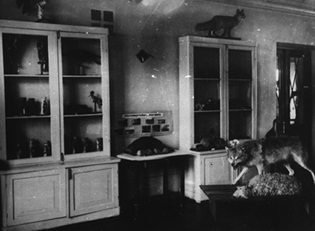
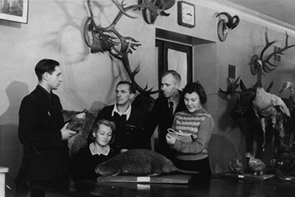 It
was comprised of two dozens of stuffed Siberian beasts and birds and was scarcely
informative, but it was a first seed sowed to the museum field. An exposition
keeper become a young zoologist D. V. Ternovskii. Later he become a famous
professor for his unique works by intergeneric hybridization of Mustelidae.
It
was comprised of two dozens of stuffed Siberian beasts and birds and was scarcely
informative, but it was a first seed sowed to the museum field. An exposition
keeper become a young zoologist D. V. Ternovskii. Later he become a famous
professor for his unique works by intergeneric hybridization of Mustelidae.
Since 1945 till 1960, vast zoological materials have been accumulated in laboratories of the Biological Institute. They demanded care, assignment and classification. This task was too big for rather weak laboratories having their own purposes. Then Direction and Scientific Council of the Institute in late sixties decided to arrange a special structural subdivision - a Zoological Museum in a rank of independent laboratory and a stuff of 5 persons.
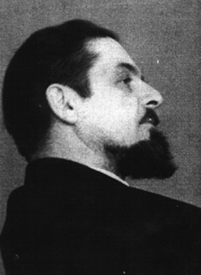 The first head of the Museum was a young entomologist, candidate of biological
sciences (Ph. D. in biology) I. V. Stebaev, having just moved from Moscow to
Novosibirsk. He was committed to start forming of a scientific zoological
collection. Its base should have comprised funds of other laboratories,
personal collections of the stuff members, donations by local lore museums
of small Siberian towns where the remnants of collections of travelers-naturalists
was finishing their existence.
The first head of the Museum was a young entomologist, candidate of biological
sciences (Ph. D. in biology) I. V. Stebaev, having just moved from Moscow to
Novosibirsk. He was committed to start forming of a scientific zoological
collection. Its base should have comprised funds of other laboratories,
personal collections of the stuff members, donations by local lore museums
of small Siberian towns where the remnants of collections of travelers-naturalists
was finishing their existence.
One of the first moved to the Museum was a large collection of Elateridae beetles (Elateridae) by Prof. A. I. Tsherepanov, who headed the Biological Institute in those times. The base of the mammal collection become a personal collection of a well-known zoologist, Prof. S. U. Stroganov. From Barnaul, a collection of coleopterans of a well known Siberian naturalist E. G. Rodd was transferred to Novosibirsk. From the Minusinsk Museum of Local Lore came the last remnants of the collection of once famous entomologists, father and son Kozhanchikovs. The first members of the Museum stuff began from a zero point arrangement of collections of acridids (I. V. Stebaev), beetles Carabidae, Tenebrionidae and Chrysomelidae (V. G. Mordkovich), and other insects. First collection containers were ordered and made, a system of labeling was worked out and a large supply of labels of various format and purposes has been prepared. First thousands of exhibits were labeled by the new museum standard.
To 1964 the collection acquired a substantial outlook and become a headache not only for the museum stuff but for other laboratories as well. They could hardly stomach the lost of the accumulated materials and considered the museum stuff members as road robbers. I. V. Stebaev, still keeping his lieutenant shoulder-straps, annexed valorously the exhibits on the territory of the enemy and then withstood furious attacks of the zealous owners. It was not surprising that after three years of stubborn battles he had to abandon the Zoological Museum for the work in the newly open Novosibirsk State University. There he successfully works as a professor until now, having achieved great advances in the field of insect ecology. The current head of the Museum, as well as all the members of its stuff who has graduated from the Novosibirsk University are his grateful disciples.
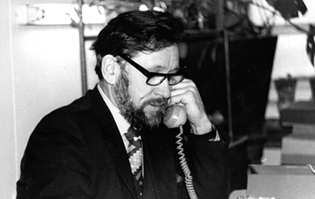
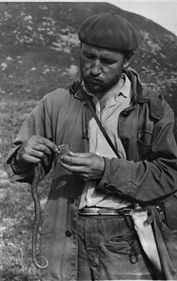 Since 1965 till 1981 the Museum was headed by a candidate of biological sciences
[Ph. D. in biology] B. S. Yudin, a
prominent specialist on insectivorous mammals. Along with him, the Museum
was entered by its oldest recent associates - a candidate, later doctor of
biological sciences [D. Sci.] G. S. Zolotarenko
and Y. P. Korshunov - specialists on
Lepidoptera. The head concentrated his attention mostly on conditions of
preserving and forms of specimen inventory. During those years
most of the specimens was labeled, cataloged and placed into new collection
containers. The overall number of specimens exceeded up to half a million.
New contributions flew enormously from other laboratories, which to that time
were already suffocated under the heap of treated materials and now
insisted on their transfer to the Museum. That time was a birth date of
the collections on many groups of insects: of dragonflies - Odonata (B. F.
Belyshev), bugs - Hemiptera (V. P. Petrova), aphids - Aphidinae
(O. I. Ivanovskaya-Shubina), Cerambycidae (A. I. Tsherepanov), ladybrids
- Coccinellidae (I. T. Filatova),
Curculionidae (F. I. Opanasenko),
Hymenoptera: Symphyta (V. K. Stroganova), mosquitoes - Culicidae (P. E.
Polyakova, L. P. Kukharchyuk), Simulidae (V. D. Patrusheva), gadflies (P. V.
Semenov, N. P. Gomoyunova), Syrphidae and flees - Siphonaptera
(N. A. Violovich). The stuff members actively collected new materials in a
number of special expeditions to the forest-tundra of West Siberia, the West
Sayan, Transbaikalia, Primorye, the Kurile Islands, Chukotka, the Caucasus,
Kazakhstan, Turkmenistan, Tadzhikistan. Only mammal collection raised to more than
5000 specimens, 3500 of which were represented by skins. An unique
collection has been bought of nests and eggs of 560 bird species, which had belonged
to a well-known Russian ornithologist and naturalist writer E. P. Spangenberg.
From Barnaul an enormous collection of butterflies by and moth E. Rodd was transferred, which
was collected in the southern West Siberia to the end of
XIX - beginning of XX centers. The Museum was contributed as well by large
private collections: by K. Z. Mitlyuchenko (various insects, mostly beetles,
collected in Ciscaucasia and Central Asia), B. Momot (beetles), Pushkov
(lepidopterans), K. G. Voinovskii-Kriger (lepidopterans). In those years
publishing begun of a continuous series of a collected paper edition
'New and Little Known Species of the Fauna of Siberia' (1965-1990, entirely
22 issues). In 1979-1980 the Museum gained by new young colleagues -
E. I. Zholnerovskaya and V. V. Dubatolov.
Since 1965 till 1981 the Museum was headed by a candidate of biological sciences
[Ph. D. in biology] B. S. Yudin, a
prominent specialist on insectivorous mammals. Along with him, the Museum
was entered by its oldest recent associates - a candidate, later doctor of
biological sciences [D. Sci.] G. S. Zolotarenko
and Y. P. Korshunov - specialists on
Lepidoptera. The head concentrated his attention mostly on conditions of
preserving and forms of specimen inventory. During those years
most of the specimens was labeled, cataloged and placed into new collection
containers. The overall number of specimens exceeded up to half a million.
New contributions flew enormously from other laboratories, which to that time
were already suffocated under the heap of treated materials and now
insisted on their transfer to the Museum. That time was a birth date of
the collections on many groups of insects: of dragonflies - Odonata (B. F.
Belyshev), bugs - Hemiptera (V. P. Petrova), aphids - Aphidinae
(O. I. Ivanovskaya-Shubina), Cerambycidae (A. I. Tsherepanov), ladybrids
- Coccinellidae (I. T. Filatova),
Curculionidae (F. I. Opanasenko),
Hymenoptera: Symphyta (V. K. Stroganova), mosquitoes - Culicidae (P. E.
Polyakova, L. P. Kukharchyuk), Simulidae (V. D. Patrusheva), gadflies (P. V.
Semenov, N. P. Gomoyunova), Syrphidae and flees - Siphonaptera
(N. A. Violovich). The stuff members actively collected new materials in a
number of special expeditions to the forest-tundra of West Siberia, the West
Sayan, Transbaikalia, Primorye, the Kurile Islands, Chukotka, the Caucasus,
Kazakhstan, Turkmenistan, Tadzhikistan. Only mammal collection raised to more than
5000 specimens, 3500 of which were represented by skins. An unique
collection has been bought of nests and eggs of 560 bird species, which had belonged
to a well-known Russian ornithologist and naturalist writer E. P. Spangenberg.
From Barnaul an enormous collection of butterflies by and moth E. Rodd was transferred, which
was collected in the southern West Siberia to the end of
XIX - beginning of XX centers. The Museum was contributed as well by large
private collections: by K. Z. Mitlyuchenko (various insects, mostly beetles,
collected in Ciscaucasia and Central Asia), B. Momot (beetles), Pushkov
(lepidopterans), K. G. Voinovskii-Kriger (lepidopterans). In those years
publishing begun of a continuous series of a collected paper edition
'New and Little Known Species of the Fauna of Siberia' (1965-1990, entirely
22 issues). In 1979-1980 the Museum gained by new young colleagues -
E. I. Zholnerovskaya and V. V. Dubatolov.
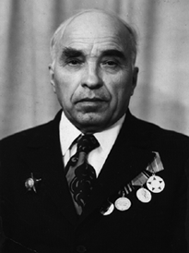 In March 1981 a major rearrangement of the Institute took place, the Museum head
become a well-known Siberian entomologist, Professor A. I. Tsherepanov. Under
his supervision, the collection proceeded growing, and a small cabinet of
systematics and phylogeny of insects has been arranged at the Museum, where worked
such prominent specialists as D. Sci N. A. Violovich
(Diptera, Siphonaptera), D. Sci. M. S. Davydova
(Acarina, Gamasina), Ph. D. Grishina
(Acarina, Oribatei), Ph. D. O. I. Ivanovskaya-Shubina (Homoptera, Aphidinae),
Ph. D. V. K. Stroganova (Hymenoptera, Symphyta),
Ph. D. I. T. Filatova (Coleoptera, Coccinellidae)
and young colleagues - A. V. Barkalov (Diptera, Syrphidae), V. Nikolskii
(Acarina, Gamasina).
In March 1981 a major rearrangement of the Institute took place, the Museum head
become a well-known Siberian entomologist, Professor A. I. Tsherepanov. Under
his supervision, the collection proceeded growing, and a small cabinet of
systematics and phylogeny of insects has been arranged at the Museum, where worked
such prominent specialists as D. Sci N. A. Violovich
(Diptera, Siphonaptera), D. Sci. M. S. Davydova
(Acarina, Gamasina), Ph. D. Grishina
(Acarina, Oribatei), Ph. D. O. I. Ivanovskaya-Shubina (Homoptera, Aphidinae),
Ph. D. V. K. Stroganova (Hymenoptera, Symphyta),
Ph. D. I. T. Filatova (Coleoptera, Coccinellidae)
and young colleagues - A. V. Barkalov (Diptera, Syrphidae), V. Nikolskii
(Acarina, Gamasina).
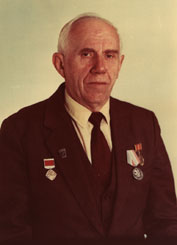 Since 1983 the Museum was headed by Professor G. S. Zolotarenko,
a well-known Siberian entomologist. His main purpose was an intense update of
the collection, especially invertebrates (Lepidoptera, Diptera etc.). By his
initiative, a collection of preparations of slides, alcohol-conserved
mammal specimens has been started and catalogization of the Museum funds was
continued. The Museum stuff have risen to 12 persons, including new ones:
B. P. Zakharov, V. K. Zinchenko, S. V. Vasilenko.
Since 1983 the Museum was headed by Professor G. S. Zolotarenko,
a well-known Siberian entomologist. His main purpose was an intense update of
the collection, especially invertebrates (Lepidoptera, Diptera etc.). By his
initiative, a collection of preparations of slides, alcohol-conserved
mammal specimens has been started and catalogization of the Museum funds was
continued. The Museum stuff have risen to 12 persons, including new ones:
B. P. Zakharov, V. K. Zinchenko, S. V. Vasilenko.
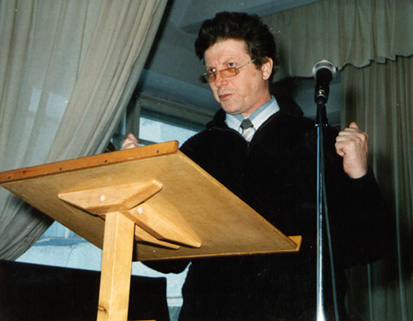 In 1987 the Museum head has changed to Prof. V. G. Mordkovich,
who, still being a young man, had participated in 60-s in foundation of the Museum collection and
than worked in the field of soil zoology. These times the Museum was harvesting
the fruits of the former imperatives. The volume of incoming contributions
attained a horrified scale much exceeding the abilities of its stuff. In this
situation, the new head has concentrated his activity on a system development
of the Museum. A vigorous growth and complication of the collection
infrastructure demanded not only exploring of new capacities of preservation
but, first of all, a considerable increase of its scientific potential. The
Zoological Museum has accepted new stuff members:
D. V. Logunov
(Araneae), V. P. Pekin (Coccinellidae), I. I. Volonikhina-Marchenko
(Gamasina),
S. E. Tshernyshev (Coleoptera),
I. I. Lyubechanskii (Coleoptera), O. G. Berezina
(Collembola), O. I. Knor (Oribatei), R. Yu. Dudko (Coleoptera),
A. A. Legalov
(Coleoptera). The repute of the collection inspired an interest to it not
only among scientists but also educational organizations. They were interested
not in scientific funds but in an exposition.
In 1987 the Museum head has changed to Prof. V. G. Mordkovich,
who, still being a young man, had participated in 60-s in foundation of the Museum collection and
than worked in the field of soil zoology. These times the Museum was harvesting
the fruits of the former imperatives. The volume of incoming contributions
attained a horrified scale much exceeding the abilities of its stuff. In this
situation, the new head has concentrated his activity on a system development
of the Museum. A vigorous growth and complication of the collection
infrastructure demanded not only exploring of new capacities of preservation
but, first of all, a considerable increase of its scientific potential. The
Zoological Museum has accepted new stuff members:
D. V. Logunov
(Araneae), V. P. Pekin (Coccinellidae), I. I. Volonikhina-Marchenko
(Gamasina),
S. E. Tshernyshev (Coleoptera),
I. I. Lyubechanskii (Coleoptera), O. G. Berezina
(Collembola), O. I. Knor (Oribatei), R. Yu. Dudko (Coleoptera),
A. A. Legalov
(Coleoptera). The repute of the collection inspired an interest to it not
only among scientists but also educational organizations. They were interested
not in scientific funds but in an exposition.
Realization of the system plan lead to the desirable results.
1. For the last 10 years the collection of the Siberian Zoological Museum has increased, as compared with the preceding decade, for 2.1 times and attained three millions of specimens. Its infrastructure become much more complicated and rich, due to an increase of the preserved animal families up to 600. Especially drastic gain concerned the collections of Chelicerata, mites, beetles, bugs, orthopterans and Neuroptera. Actively being formed is the collection of type specimens, including the holotypes. Earlier the holotypes were transferred to the museums of the European Russia. Now they are retained in the Siberian Zoological Museum, and they are now counted by hundreds. For many animal groups, museum catalogues were compiled in both typographical and computer versions, in Russian and English. The museum area has increased for 1.5 times. The growth of the collection is fulfilled not only by collecting by the members of the stuff of the Museum and other laboratories of the Institute of Systematics and Ecology of Animals, but also through exchange with other museums of the world. The Museum continues to be contributed by private collections (those of bugs by S. B. Kulik, of beetles by B. S. Pavlov-Verevkin, of the Tachinidae flies by N. G. Kolomiets).
2. Complication of the collection infrastructure has demanded, first, an increase of the stuff; second, tutorship of new scientific stuff members being curators of main collection subdivisions; third, a reasonable universalization hitherto narrowly specialized specialists. Preparing the scientific stuff members is going on just in the Siberian Zoological Museum through activities of its elder stuff members and on a base of the Novosibirsk Tomsk, St.-Petersburg and other Universities. For the last 15 years many Museum associates have defended their Candidate Dissertations [Ph. D. Theses]: A. V. Barkalov and B. P. Zakharov (Diptera) under the supervision of N. A. Violovich, D. Sci; ; I. I. Volonikhina-Marchenko (Acari, Gamasida) under the supervision of M. S. Davydova, D. Sci.; V. V. Dubatolov (Lepidoptera) and S. V. Vasilenko (Lepidoptera, Geometridae) under the leadership of Prof. G. S. Zolotarenko; D. V. Logunov (Aranea), V. P. Pekin (Coleoptera, Coccinellidae), S. E. Tshernyshev (Coleoptera, Meloidae, Malachiidae, etc.), R. Yu. Dudko (Coleoptera, Carabidae), A. A. Legalov (Coleoptera, Curculionoidea), O. G. Berezina (Collembola), I. I. Lyubechanskii (Coleoptera, Carabidae) under the leadership of Prof. V. G. Mordkovich. Nowadays the Museum stuff includes 27 persons, of which 12 are Candidates of Biological Sciences [Ph. D.] and 2 are Doctors of Sciences [D. Sci.]. For the last 10 years the stuff associates have published 11 books and more than 250 papers in Russian and other European languages in Russian, West European and Japanese journals.
3. For the last 2 years a zoological exposition has been being actively formed on an area of 200 m2. Its first part includes 14 glass cases demonstrating the diversity, taxonomy, directions of adaptive evolution, intraspecies variation, results of intergeneric hybridization, constructive activities of animals.
As a result of its development, the Siberian Zoological Museum has turned into one of the largest professional zoological museum and an active center of systematics and faunistics of the Asian Russia. In spite of the negative circumstances which harass Russia in the latest years, the Museum develops dynamically and has an intention not to be lost in the constellation of museums of XXI century.
The head of the Siberian Zoological Museum, , D. Sci. Prof. V. G. Mordkovich
References
Yudin, B. S. 1970. Zoological
Museum of Biological Institute of Siberian Division of the Academy of Sciences
of the USSR // Fauna of Siberia. - Novosibirsk: Nauka, p. 7-9.
Zolotarenko, G. S. 1989. Zoological Museum of
Biological Institute (BI) // Museums of the Academy of Sciences of the USSR
and Academies of Sciences of the Union Republics. 2nd edition, revised and updated.
- Moscow: Nauka, . 61-62.
Mordkovich, V. G., Zholnerovskaya, E. I. 1995. Collections
of the Siberian Zoological Museum (to 50-th anniversary of the Museum) //
Zoologicheskii Zhurnal, Vol. 74, Issue 9, p. 137-143.